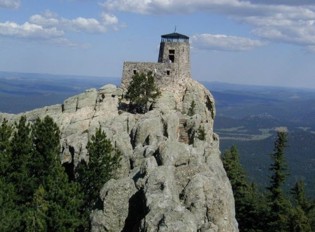What's in a Name?
 As a reporter for a national news organization covering legal news in South Dakota (and sometimes beyond), I’ve become much more attuned to what is happening in my home state than I ever have been in the past — especially when it comes to the state’s Native American population.
As a reporter for a national news organization covering legal news in South Dakota (and sometimes beyond), I’ve become much more attuned to what is happening in my home state than I ever have been in the past — especially when it comes to the state’s Native American population.
Nearly 10% of South Dakota’s population is Native, which is the highest percentage of any state. Unfortunately, South Dakota’s tribes are also among the poorest American Indians in the nation.
Over the last year, South Dakota’s Board of Geographic Names has been considering whether to rename Harney Peak, the state’s highest point, which was named for General William Harney, who led a slaughter against the Lakota people in 1855.
Last week, they decided to leave the name as-is, a decision which I covered here.
This was a story I could not stop thinking about after it was completed, mostly because the letters I had read that made up the public outcry against the name kept running through my head.
It broke my heart that people were willing to choose “tradition” over the very real injuries suffered by our Lakota neighbors.
When I covered the story for the news, I sought to be as objective as possible. It was clear after listening to the minutes of the meeting that this was an excruciating decision. Below is my less-objective letter to the editor, which I sent to South Dakota’s major newspapers on Saturday.
I am writing to express my disappointment in the South Dakota Board of Geographical Names’ recent decision to reverse its recommendation that the name of Harney Peak be changed.
The Board made this decision in response to public outcry against their earlier recommendation to restore the peak’s earlier, Lakota name, Hinhan Kaga.
When we are trying to fairly address the needs of a minority population, “majority rules” is not always the most sound or ethical strategy. In a matter like this, it may behoove us to ask who has more at stake, and who will suffer the most harm following the decision.
It is not surprising, in a state where 90 percent of the population is non-Native, that the Native voices were quickly drowned out by the cacophony. This was especially, painfully obvious in the comments made at the board’s June 29 meeting, in which the single Native board member stood alone in voting against the reversal. If we allow “majority rules” to dictate at times like this, then we continue to participate in the oppression and abuse of our Native population. Is that the way we really want to make our decisions?
It may have been more appropriate to ask not what the majority wanted, but whose reasons for their stance was most compelling. Our Native population was asking for our understanding in Harney Peak’s ongoing insult to their dignity. Not only was it named after a general who slaughtered their people, but it is also located on sacred land that rightfully belongs to them, despite the myriad ways non-Native South Dakotans have exploited and profited from it.
On the other hand, detractors to the name change gave reasons such as that it had “always been that way” (not at all — only since the 1850s), that people would not be able to pronounce the new name (they could learn), that it would interfere with people’s lifetime of “good memories” on Harney Peak (the name change did NOT have the power to erase memories), or that the change would be “too costly.” But was not the loss of Native life Harney’s name stands for far more costly than drawing up new maps and brochures?
Unfortunately, the Harney Peak debacle is just the most recent in a long history of oppressing our Native population. I am a reporter for a national news organization — although I am writing as a concerned South Dakotan, not as a representative of my employer — and I am appalled at how little local coverage our media gives to the injustices we still regularly mete out upon South Dakota’s tribes. In the past year alone, we’ve seen a South Dakota county interfere with Native Americans’ voting rights (Poor Bear v. Jackson County) and a county judge reprimanded for his disregard of the Indian Child Welfare Act (Oglala Sioux Tribe v. Van Hunnik). Yet, our Attorney General offered no official release on either of these cases, which reduced local coverage, local knowledge, and most importantly, local outcry.
This is the backdrop against which we deal yet another blow to our Native population.
I understand the Board’s reluctance to move forward with a decision that the majority did not support, so I cannot fault them entirely. Instead, I am disappointed that, as a state, we are not yet ready to take even the smallest steps toward correcting the injustices we have visited upon our Native neighbors for hundreds of years.
Lacey Louwagie
Sioux Falls, SD